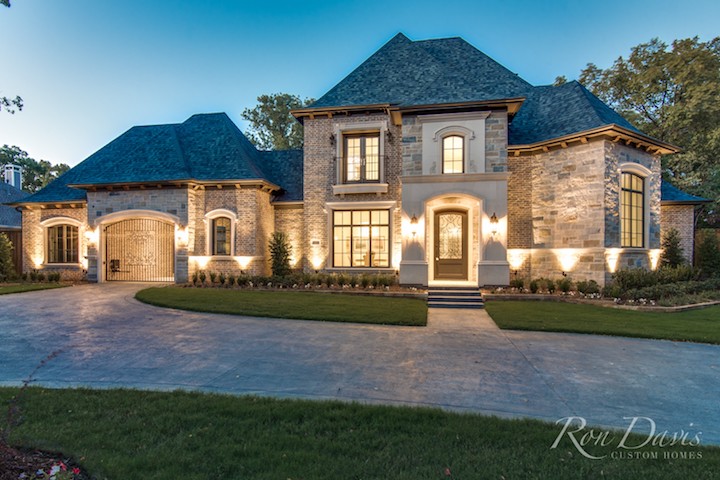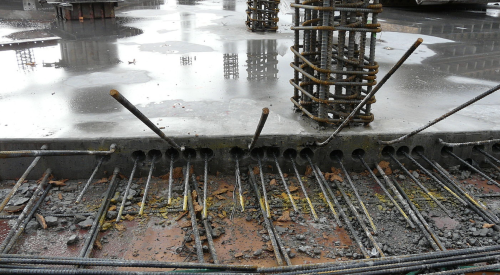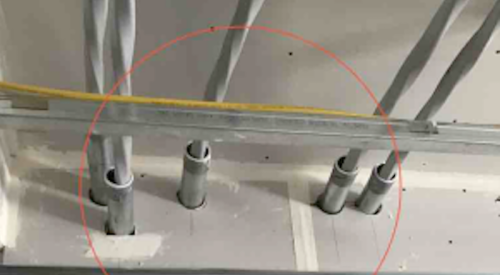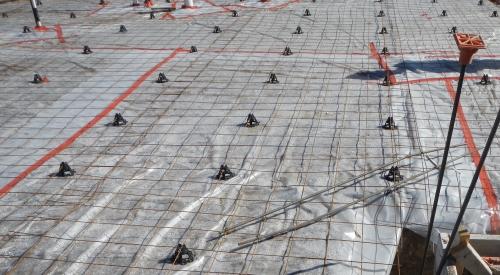As CEO of Tella Firma Foundations, a Dallas-based construction technology firm, Jim Fontaine understands that what is beyond the surface of the home is equally as important as what is within it. Tella Firma developed and patented an elevated slab foundation system that combines the efficiency of a slab foundation with the protection of a pier-and-beam foundation. This system, Fontaine says, prevents the foundation from moving if there is any instability or movement in the soil and, with the Tella Firma system, the soil doesn't have to be prepped in advance with water or chemicals.
Fontaine spoke with Design Insider about this patented technology and the potential benefits for homeowners. Dallas home builder Ron Davis also weighed in about his experience with the system.
[DI] I understand that the elevated foundation has been used in commercial construction for years. When did you develop it for the residential market?
[JIM FONTAINE] Tella Firma was launched in 2015.
[DI] Does the foundation prevent damage from the house settling?
[FONTAINE] Yes, and it also protects the house against soil expansion.
[DI] Could this technology be applied on sites with expansive soils that are not in Texas?
[FONTAINE] Yes. The company got its start in Texas, but we also have projects in Colorado and we’re looking at other states.
[DI] How long does it take to build a Tella Firma foundation versus a conventional one? Does it cost more?
[FONTAINE] It takes a little longer to build a Tella Firma foundation, but much less time to condition the soil, and many times it’s faster overall.
The solution adds approximately 1 percent to the cost of a home at the time of construction, but it saves money down the road in terms of avoiding costly foundation repairs. It’s like an insurance policy for the foundation.
[DI] How widespread is the use of the Tella Firma system?
[FONTAINE] We have about 15 percent of the custom market in Dallas/Fort Worth, and we’re working with about half a dozen well-known production builders, including Lennar and Meritage.
[DI] Ron, how many homes have you built using the Tella Firma foundation?
[RON DAVIS] I’ve used it in 34 homes over the last few years. Currently I’m partnering with Tella Firma on several projects in the Hills of Kingswood in Frisco, Texas.
[DI] Why is there a need for this type of foundation?
[DAVIS] Throughout North Texas, active clay soils often present a challenge for builders seeking to create a stable foundation for their residential projects. Over time, with the swelling and shrinking of the soil, a foundation can be damaged and require the homeowner to make costly repairs. And in a community like the Hills of Kingswood, where the lots take advantage of rolling hillsides and natural terrain, the foundation becomes even more critical.
[DI] What do you like about it?
[DAVIS] It combines the ease of construction of a slab-on-grade foundation with the performance of a suspended foundation, such as a pier-and-beam. The foundation is poured directly on the ground and then lifted so there is a protective void between the foundation and the soil. If there is any instability or movement, the foundation won’t be affected.
Another advantage is that the soil doesn’t need to be prepped in advance. There’s no need to inject water or chemicals, which ensures a green foundation process.
[DI] What would you tell a builder who has never used Tella Firma?
[DAVIS] You’ll need to work with a number of groups on a new idea and process. Tella Firma was there [on my job sites] at the outset to make sure that the superintendent, the concrete installer, and the plumber knew the differences from a slab-on-grade system and could get the job done.
The other difference is that you’ll need to wait seven days to begin framing, because the slab must be cured properly before it’s lifted. You make that up by not having to remediate the soil ahead of time.












